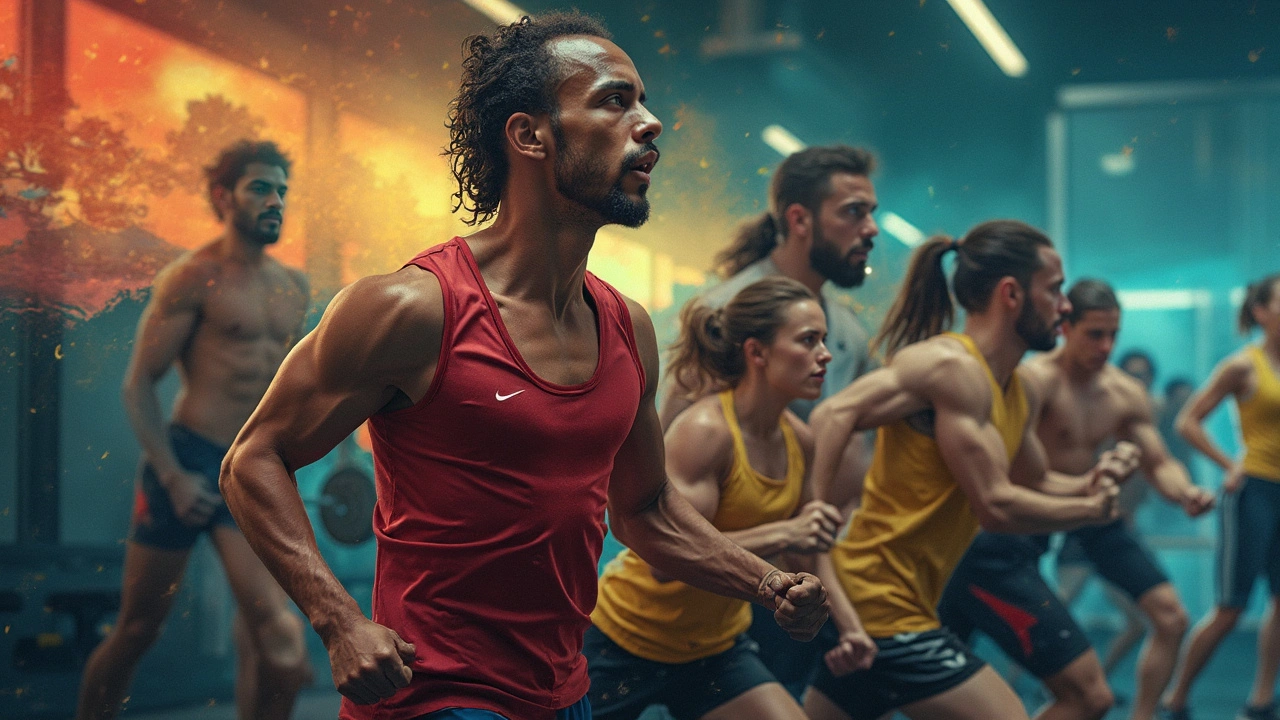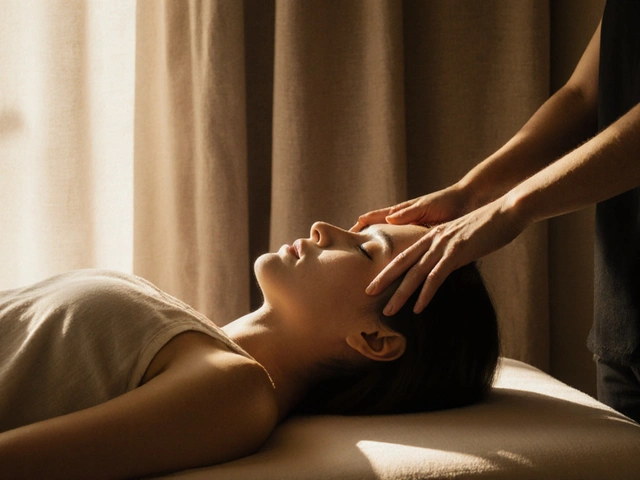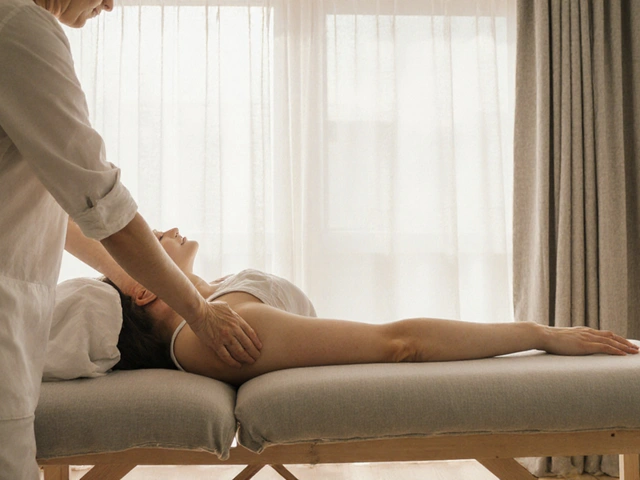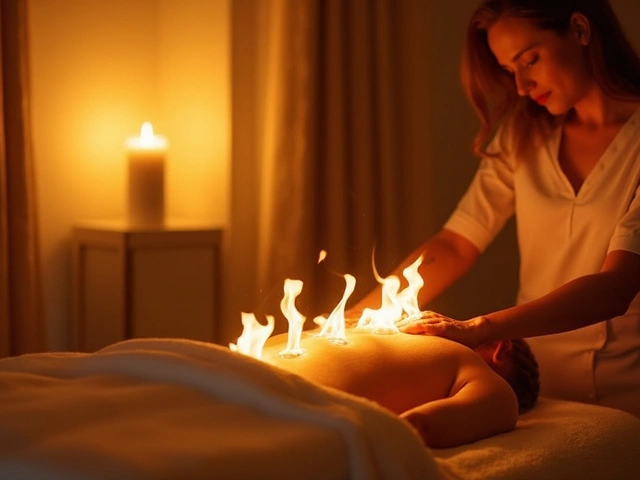Sports Massage: More Than Just a Luxury

You might think of a massage as a once-in-a-while treat—something nice to have but not a necessity. But for athletes, a sports massage is way more than just a luxury. It's like a secret weapon for anyone who takes their physical performance seriously. Ever wondered how those Olympic stars seem to bounce back so quickly after grueling events? Yep, sports massage plays a big part in that.
We're going to dig into what makes this type of massage unique. First and foremost, it's all about targeting the muscles used during physical activity. Unlike a typical relaxation massage, it's designed to relieve strain and prevent injury. Plus, it's not just for the pros. Weekend joggers or gym enthusiasts can benefit too. Why walk around with sore muscles when there's a simple solution to feeling great and performing even better?
- Breaking Down Sports Massage
- Benefits for Every Athlete
- Science Behind the Relief
- Incorporating Massage into Your Routine
- Choosing the Right Therapist
Breaking Down Sports Massage
At first glance, sports massage might look like any other massage technique, but there's a method to the magic. This type of massage is designed for people who push their bodies hard—think athletes, dancers, and even those of us who love intense workout sessions. What sets it apart is its focus on improving athletic performance and aiding recovery.
How does it work? Well, sports massage tackles muscle tension and helps increase flexibility. By using techniques like deep tissue work, friction, and stretching, therapists are able to reach the deeper layers of muscle and connective tissue. One goal is to flush out toxins from sore muscles, speeding up the repair process and restoring function faster than if left alone.
A sports massage session often begins with a consultation. The therapist will ask about your training schedule and any problem areas. This information helps tailor the treatment to your specific needs. The massage isn't just about pressure—it's about understanding your body mechanics and working with them.
There are generally three types of sports massage techniques: pre-event, post-event, and maintenance. Each is focused on different outcomes. A pre-event massage will be shorter and more invigorating, while a post-event one is about calming down the muscles and reducing soreness. Maintenance massages are for long-term performance enhancement and injury prevention.
While every session can vary, here's a quick snapshot of what sports massage can include:
- Deep Tissue Techniques: Targeting deeper muscle structures to release tension.
- Trigger Point Therapy: Addressing specific knots or areas of muscle tightness.
- Myofascial Release: Aiming to ease tension and improve movement.
If you're getting ready for a big race or simply want to keep your muscles in top shape, understanding these basics means you're better equipped to use sports massage to boost your game.
Benefits for Every Athlete
Whether you're hitting the track on weekends or competing in regional tournaments, sports massage offers perks that can enhance your athletic experience. One of the main benefits is how it helps with recovery. After strenuous workouts, muscles tend to be tight and sore. Massage helps to loosen them up, making it easier to bounce back quickly. This isn't just guessing – studies have shown that sports massage can reduce muscle soreness by up to 30%!
Another big win? Injury prevention. By improving flexibility and range of motion, sports massage acts like insurance against strains and sprains, often caused by tight muscles that don't respond well under stress. It's kind of like making sure your car tires are well-inflated before a road trip. You wouldn't want to risk a blowout!
Plus, there's the performance boost. Better circulation, thanks to targeted massage techniques, means your muscles get more oxygen. And more oxygen leads to increased energy and stamina when you need it most. Imagine tackling that last mile in your run or the final minutes of a soccer match with that extra bit of fast-burning fuel.
Let's not forget the mental side. Despite the focus on physical benefits, a good sports massage also helps with relaxation and stress reduction. It can clear your mind and make you feel refreshed, which is super handy when preparing for an event.
Here's a quick rundown of the benefits:
- Recovery Boost: Speeds up muscle recovery, cutting down soreness and fatigue.
- Prevents Injuries: Enhances flexibility, lowering the risk of strains.
- Performance Improvement: Increases blood flow, leading to more energy.
- Mental Benefits: Reduces stress and aids in mental clarity.
So, next time you consider treating yourself to a sports massage, remember it's doing more than just feeling good—it's a strategic move towards better health and enhanced performance.

Science Behind the Relief
Okay, so you might be wondering what really makes sports massage tick. It's more than just hands on muscles; there's actual science supporting how effective it is. Primarily, it works by improving blood circulation in the targeted areas. When blood flow increases, it supplies more oxygen and nutrients to muscles, aiding recovery and reducing soreness. Imagine your muscles as a car engine—without proper fuel, it just doesn’t run smoothly.
Then there’s the vast world of fascia. It's the connective tissue surrounding muscles and organs, and it can get pretty tight from intense workouts. A good massage helps to loosen up this fascia, essentially allowing your muscles to move more freely and reducing the stiffness that can sometimes feel like a straightjacket around your limbs.
Let's not forget about the role of cortisol, the stress hormone. After a workout, our bodies often produce this hormone, and it can lead to muscle tension. A sports massage has been shown to lower cortisol levels, helping you feel relaxed both mentally and physically.
For those who love a bit of data, a recent study found that athletes who incorporated regular sports massages were able to reduce their recovery time by up to 30%. That's pretty significant, especially if you're someone who’s constantly training or competing.
So the next time you think about whether a sports massage is worth it, remember it's all grounded in science. It's not just about easing the immediate pain—it's about ensuring your body functions at its best and you aren't sidelined by preventable injuries.
Incorporating Massage into Your Routine
Adding sports massage to your routine doesn’t have to be complicated, but you'll feel like a pro when you do. Whether you're gearing up for a race or just want to boost your gym sessions, this could be the missing piece in your fitness puzzle.
To start, think of sports massage as part of your training plan, not an extra. Aim to schedule a session once every two to four weeks, depending on your activity level and intensity. If you're ramping up for a big event, weekly massages can really help you stay on top of your game.
Here’s a neat tip: book your sessions strategically. Try having a massage a day or two after a heavy workout. It helps clear lactic acid and other waste products from your muscles, speeding up recovery. Or do one a couple of days before a competition to help increase flexibility and mental readiness.
Feel like it's too costly? Consider it an investment in your body's maintenance. Many gyms offer packages or discounts, so ask around. Or try learning some basic massage techniques together with foam rolling. It won’t do all the magic a professional massage does, but it's a step in the right direction when you’re short on time or cash.
If you're into numbers, here's an interesting bit: in a survey of athletes who regularly use sports massage, about 90% reported improved muscle flexibility and fewer injuries. Making it part of your routine could be the smartest move you make.
Incorporating it into your lifestyle isn't just for immediate relief—it's about building a habit that supports your body long-term. You'll notice your recovery time shrinking, and hey, that means more time for the fun stuff, right? So don’t just squeeze it in; make it a regular gig as important as your workouts.

Choosing the Right Therapist
Picking the right therapist for your sports massage is a game-changer. Not every therapist is the same, and some might not even specialize in sports. You want someone who knows their stuff about muscular systems and sports injuries. This expertise makes a huge difference in how effective the massage is.
First off, check their credentials. Are they certified? A proper certification means they’re trained in the techniques that are best for soothing muscle tension and aiding recovery. Also, look for someone with experience. Ask how long they've been working specifically with athletes. Experience is key because they get how to handle different types of sports injuries and individual needs.
Don't hesitate to ask around or look for reviews. Word of mouth from other athletes can give you insights into a therapist’s reputation. You might also want to factor in convenience like location and availability. If it's easy to schedule and not far out of the way, you'll be more likely to stick with regular sessions.
Some therapists might offer a free initial consultation. Take advantage of this to gauge whether you feel comfortable with them. A good therapist will ask you about your goals and explain how they can help you reach those goals with their treatments.
Here's a quick checklist to help you make the right choice:
- Certification and Specialization: Make sure they have proper training in sports massage.
- Experience: Look for those who have a proven track record with athletes.
- Reputation: Read reviews or ask fellow athletes for recommendations.
- Convenience: Consider their location and if they fit your schedule.
- Comfort Level: Use a consultation to see if you click with them.
Finding the right therapist is more than just comfort—it's about getting the most out of your massage sessions and supporting your athletic journey in the best way possible.





